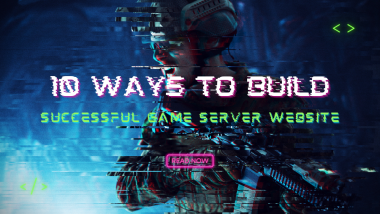Early access games have become a popular trend in the gaming industry, offering developers a unique opportunity to engage with players and refine their games during the development process. This article aims to explore the pros and cons of early access games from the perspective of game developers. By understanding the advantages and disadvantages, developers can make informed decisions about whether or not to pursue the early access model for their own projects.
I. Pros of Early Access Games:
- Player Feedback and Community Engagement: One of the biggest advantages of early access games is the opportunity to receive valuable feedback from players. Developers can engage with the community, gather suggestions, identify bugs, and make improvements based on user experiences. This iterative process helps refine the game, enhancing its overall quality and increasing the chances of success upon full release.
- Building a Dedicated Player Base: Early access games often attract a passionate and dedicated player base. By involving players in the development process, developers can create a sense of ownership and loyalty among the community. These early adopters can become strong advocates for the game, spread the word, and contribute to building a positive reputation, which is crucial for long-term success.
- Financial Support and Sustainability: Releasing a game in early access allows developers to generate revenue during the development phase. This financial support can be used to fund ongoing development, hire additional resources, or cover other expenses related to the project. Additionally, the revenue generated from early access sales can help sustain the development team and keep the project alive until the full release.
- Market Validation: Early access provides an opportunity to test the market and gauge player interest in the game. By observing player engagement, reviews, and sales metrics, developers can assess whether their game has the potential to succeed in the competitive gaming market. If early access generates positive results, it can instill confidence in the project’s viability and attract potential partners or investors.
II. Cons of Early Access Games:
- Unfinished and Unpolished Experience: The primary drawback of early access games is that players are exposed to an unfinished and potentially unpolished product. Bugs, performance issues, and missing features are common in early access titles, which can lead to a negative player experience. This can result in poor reviews, negative word-of-mouth, and damage to the game’s reputation if not managed properly.
- Development Pressure and Unrealistic Expectations: Engaging with players during early access can be both a blessing and a curse. While player feedback can be invaluable, it can also create significant development pressure. Balancing player expectations and managing the constant stream of suggestions can be overwhelming for developers. It is crucial to set realistic expectations and communicate openly with the community to avoid disappointment and frustration.
- Reputation Risks: Releasing a game in early access comes with inherent risks to the developer’s reputation. If the game fails to meet player expectations or experiences significant issues, it can tarnish the studio’s image. Negative reviews or public backlash can have long-lasting effects, making it harder to recover and rebuild trust with the community in the future.
- Revenue Dependency: While early access can provide financial support, it also creates a dependency on the game’s revenue before it reaches completion. Developers must carefully manage finances and ensure that the revenue generated during early access is sufficient to sustain the development process. If the game fails to attract enough players or generate substantial revenue, it may jeopardize the project’s future.
III. Best Practices for Early Access Games:
- Clear Communication: Maintain open and transparent communication with the community. Set realistic expectations about the game’s state, development roadmap, and anticipated timeline for updates. Regularly update players about bug fixes, feature additions, and any major changes to the game. This helps manage player expectations and builds trust.
- Actively Engage with the Community: Interact with players through forums, social media, and other channels to gather feedback and address concerns. Encourage players to report bugs and suggest improvements. Actively involving the community in the development process fosters a sense of ownership and creates a dedicated player base.
- Regular Updates and Iteration: Consistently release updates that address player feedback and improve the game. Show a commitment to making the game better with each iteration. Regular updates not only keep players engaged but also demonstrate progress and dedication to the project.
- Bug Fixing and Performance Optimization: Prioritize bug fixing and performance optimization to provide a smoother and more enjoyable experience for players. Addressing technical issues promptly can significantly impact the perception of the game and increase player satisfaction.
Conclusion
Early access games present both advantages and challenges for developers. While they offer an avenue for player engagement, community building, and financial support, they also carry risks such as reputation damage and unrealistic expectations. By understanding the pros and cons outlined in this article and implementing best practices, game developers can make informed decisions about whether early access is the right path for their projects. With careful planning, effective communication, and a commitment to improvement, developers can harness the potential of early access to create successful and memorable gaming experiences.






